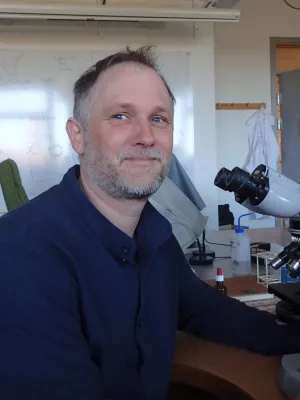
Karl Ljung
Lecturer

Organic Carbon Burial in Constructed Ponds in Southern Sweden
Author
Summary, in English
Small ponds constructed for nutrient retention, biodiversity conservation or recreation also store large amounts of carbon. The potential role of small ponds for carbon storage and greenhouse gas emissions have been highlighted both in the scientific literature and in management plans. The role of small ponds in the global carbon budget is likely significant, but the potential has not been fully explored. Here we present measurements of yearly sedimentary carbon accumulation and carbon stocks in six small, constructed and restored ponds in southern Sweden. The ponds were constructed or restored during the last 20 years primarily for nutrient retention. The sediment cores span the time from the construction of the ponds until today. The ponds had high carbon accumulation, with mean total carbon stocks in the top 6 cm of sediment of 836 g C m−2 and a yearly mean C accumulation rate of 152 g C m−2 yr−1. The total amount of restored wetlands within the restoration program studied here has a total area of 480 ha, and upscaling the carbon stocks to the whole area of restored ponds and wetlands gave a total carbon stock of 4.013 × 106 kg C in the top 6 cm of the sediments. If considering the potential increase of CO2 and CH4 from the ponds it is likely that the constructed ponds studied here are net carbon sources. We compared our results with published measurements of CO2 and CH4 emissions from small ponds in Sweden. This shows that the CO2 equivalent emissions could be between 1.8 and 37.5 times higher than the sedimentary carbon accumulation. Our data indicate that small constructed ponds are potential net carbon sources. Therefore, we suggest that using small, constructed, or restored ponds as carbon mitigation strategy must be done with caution, and the potential for increased methane emissions must be considered.
Department/s
- Centre for Environmental and Climate Science (CEC)
- Environmental Science
- Quaternary Sciences
- BECC: Biodiversity and Ecosystem services in a Changing Climate
Publishing year
2023-01-12
Language
English
Pages
1-13
Publication/Series
Earth Science, Systems and Society
Volume
3
Document type
Journal article
Publisher
Geological Society of London
Topic
- Climate Research
- Ecology
Keywords
- carbon stocks
- carbon accumulation,
- constructed ponds
- climate mitigation
- sediment
- carbon stocks
- carbon accumulation
- constructed ponds
- climate mitigation
- sediment
Status
Published
ISBN/ISSN/Other
- ISSN: 2634-730X

